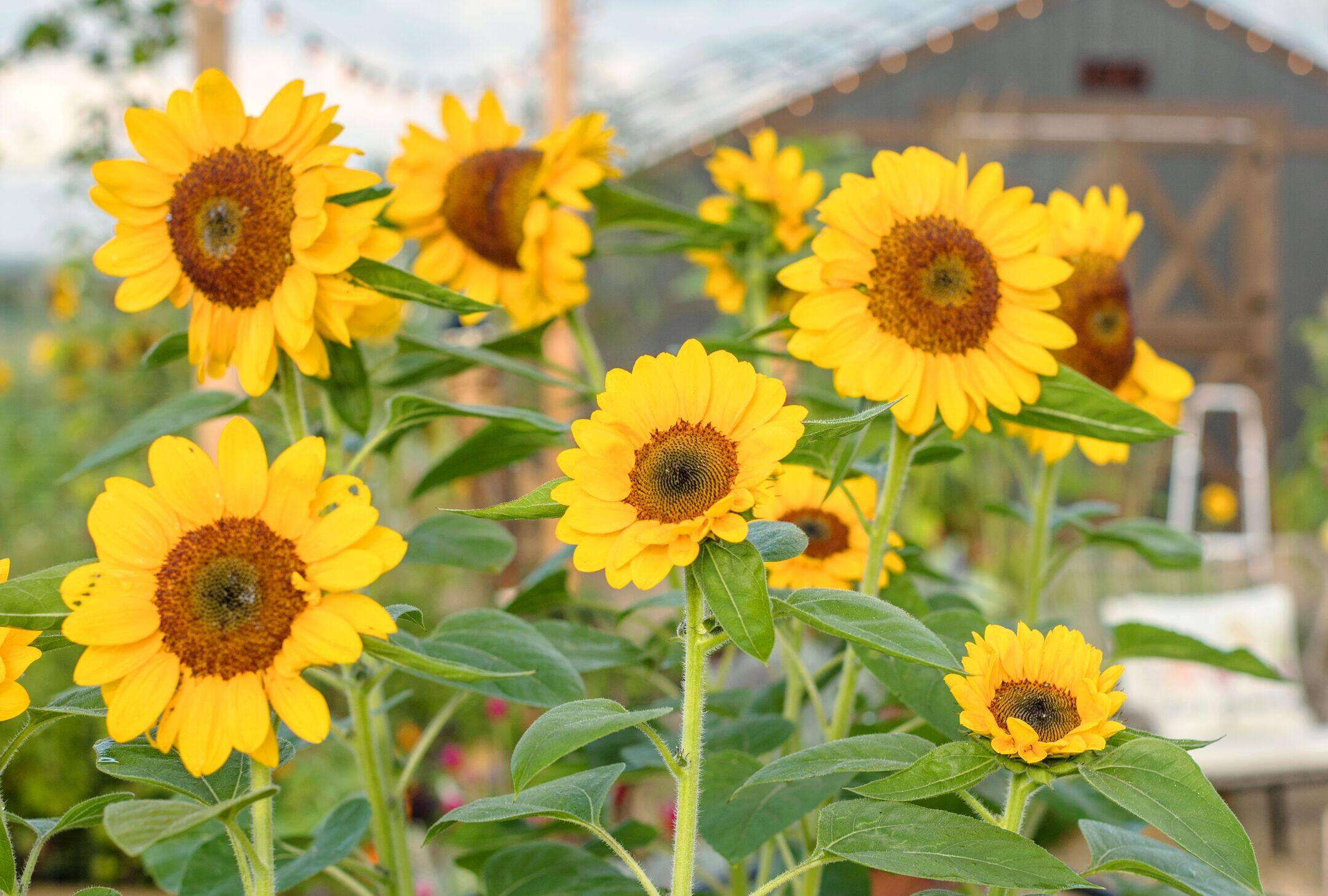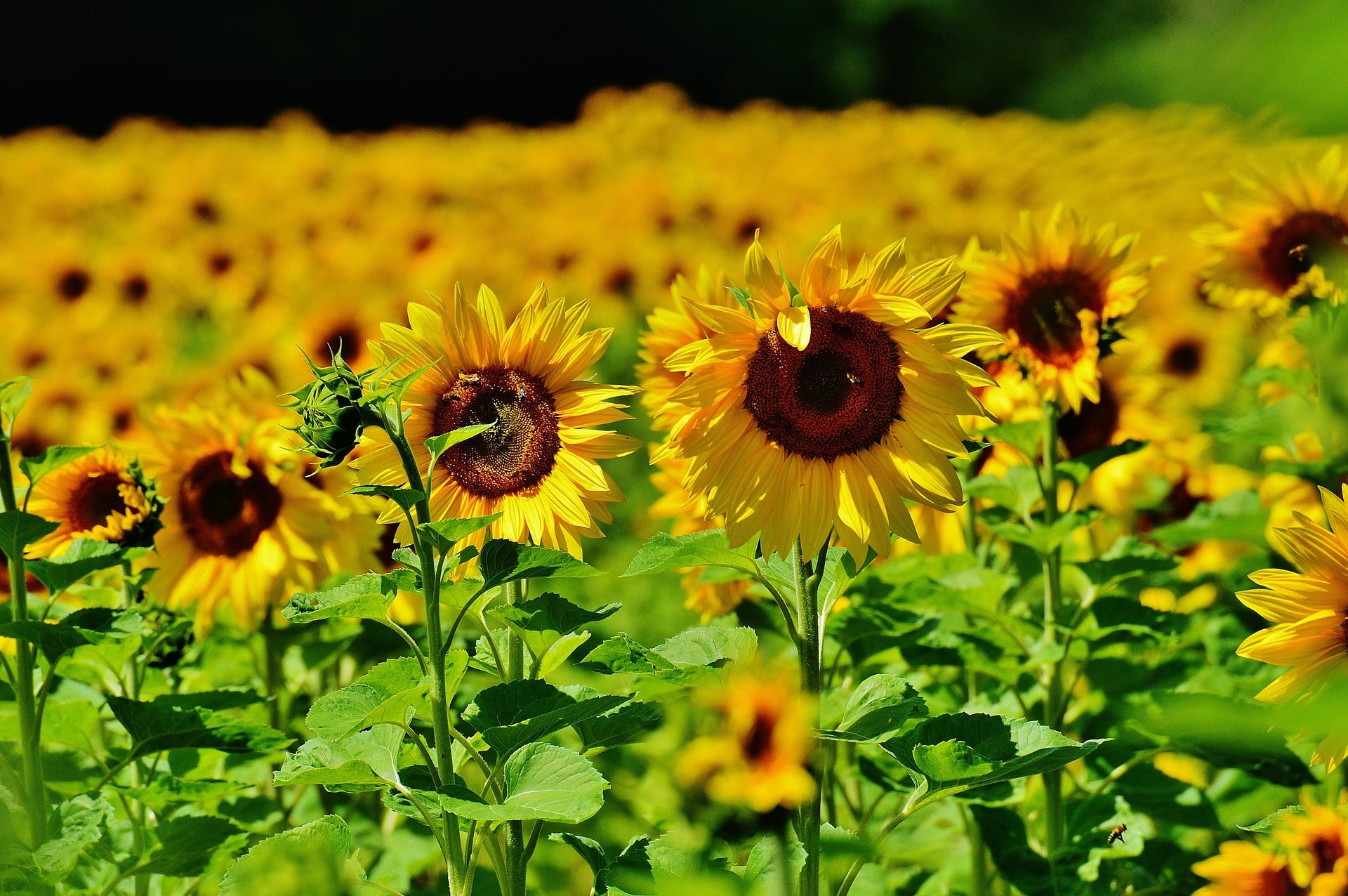Preparing the Soil for Sunflower Seeds
Before sowing sunflower seeds, it’s essential to prepare the soil to ensure optimal growth. Sunflowers require a well-draining soil with a pH level between 6.0 and 7.0. A slightly acidic to neutral soil pH allows sunflowers to absorb the necessary nutrients for healthy growth. The ideal soil type for sunflowers is a rich, fertile loam with a mix of clay, silt, and sand. This type of soil retains moisture but drains excess water, reducing the risk of waterlogged soil and root rot.
Additionally, sunflowers require adequate nutrient supply, particularly nitrogen, phosphorus, and potassium. A balanced fertilizer with a ratio of 10-10-10 (nitrogen-phosphorus-potassium) can be applied before sowing sunflower seeds. It’s also crucial to remove any debris, rocks, and weeds from the soil to prevent competition for water and nutrients. By preparing the soil correctly, you’ll be setting your sunflowers up for success, giving them the best chance to grow strong and healthy.
Sowing Sunflower Seeds: Timing and Techniques
When it comes to sowing sunflower seeds, timing is crucial. The ideal time to sow sunflower seeds is in late spring to early summer, when the soil has warmed up to at least 60°F (15°C). This allows the seeds to germinate and grow rapidly, taking advantage of the warm weather. It’s also essential to ensure the soil is moist but not waterlogged, as sunflowers require consistent moisture levels during the germination stage.
In terms of sowing techniques, it’s recommended to sow sunflower seeds 1 inch deep and 6 inches apart in well-draining soil. Sow the seeds in a location that receives full sun, as sunflowers require at least 6 hours of direct sunlight per day. When sowing, make sure to plant the seeds in a north-south direction to minimize shading and promote even growth. By following these guidelines, you’ll be giving your sunflowers the best possible start in life, setting them up for a successful growth journey.
The Germination Process: What to Expect
After sowing sunflower seeds, the next stage is germination. This process typically takes around 7-10 days, depending on factors such as soil temperature, moisture levels, and seed quality. During this stage, the seed absorbs water, and the embryo begins to grow, eventually breaking through the soil surface.
As the seedling emerges, it will develop its first set of leaves, known as cotyledons. These leaves are responsible for absorbing sunlight and nutrients, providing the seedling with the energy it needs to grow. It’s essential to maintain consistent moisture levels during this stage, as sunflowers are susceptible to drought stress.
As the seedling grows, it will begin to develop its root system, anchoring itself in the soil and absorbing essential nutrients. This stage is critical in determining the overall health and vigor of the sunflower plant. By understanding the germination process, you can provide the necessary care and attention to ensure your sunflowers get off to a strong start, ultimately influencing how long it takes for sunflower seeds to grow and thrive.
How Long Does it Take for Sunflower Seeds to Grow?
One of the most common questions when growing sunflowers is, “how long does it take for sunflower seeds to grow?” The answer depends on various factors, including the specific sunflower variety, growing conditions, and care. On average, it takes around 60 to 90 days for sunflower seeds to reach maturity from sowing.
The growth rate of sunflowers is influenced by factors such as temperature, moisture, and light exposure. Sunflowers require full sun and well-draining soil to grow rapidly. In ideal conditions, sunflowers can grow up to 6 inches per day, making them one of the fastest-growing flowers.
Another critical factor affecting growth rate is the specific sunflower variety. Some dwarf varieties can mature in as little as 40 days, while taller varieties can take up to 120 days. It’s essential to choose a variety suitable for your climate and growing conditions to ensure optimal growth.
Proper care, including regular watering, fertilization, and pest control, also plays a significant role in determining how long it takes for sunflower seeds to grow. By providing the necessary care and attention, you can encourage healthy growth and maximize the potential of your sunflowers.
Nurturing Sunflowers: Watering, Fertilizing, and Pest Control
To ensure healthy growth and maximize the potential of your sunflowers, it’s essential to provide proper care and attention. This includes a consistent watering schedule, balanced fertilization, and effective pest control methods.
Watering is critical during the germination and seedling stages, as sunflowers require consistent moisture to develop strong roots. Water deeply once or twice a week, depending on weather conditions, to encourage healthy growth. As the plants mature, reduce watering to once a week to prevent overwatering, which can lead to root rot and other issues.
Fertilization is also crucial for sunflower growth. Use a balanced fertilizer with a ratio of 10-10-10 (nitrogen-phosphorus-potassium) to provide essential nutrients. Apply fertilizer at planting time and again when the plants are about 12 inches tall. Avoid overfertilizing, as this can damage the plants and the environment.
Pest control is another vital aspect of sunflower care. Common pests that can affect sunflowers include aphids, whiteflies, and spider mites. Use organic pest control methods whenever possible, such as introducing beneficial insects or spraying soapy water. For more severe infestations, use chemical pesticides as a last resort.
By following these guidelines, you can create an ideal environment for your sunflowers to thrive. Remember, proper care and attention are essential to ensure your sunflowers reach their full potential and answer the question, “how long does it take for sunflower seeds to grow?”
Supporting Sunflowers: Staking and Pruning
As sunflowers grow, they can become top-heavy and prone to damage from wind, rain, or their own weight. Providing support through staking and pruning is essential to promote strong stem growth, prevent damage, and encourage healthy development.
Staking is a simple yet effective way to support sunflowers. Use bamboo stakes or wooden stakes that are at least 6 feet tall to provide adequate support. Gently tie the stem to the stake using twine or soft material, taking care not to constrict the stem. This will help keep the plant upright and prevent it from toppling over in the wind.
Pruning is another crucial aspect of supporting sunflowers. Remove any weak or spindly growth from the plant, as this can divert energy from the main stem and reduce overall growth. Remove any dead or dying leaves or flowers to prevent the spread of disease and encourage healthy growth.
Pruning can also help control the height of sunflowers, which can be beneficial if you’re growing them in a small space. By removing the terminal bud, you can encourage branching and create a bushier plant. This can also increase the number of flowers produced, making it a great technique for those looking to harvest sunflower seeds.
By providing support through staking and pruning, you can help your sunflowers reach their full potential and answer the question, “how long does it take for sunflower seeds to grow?” With proper care and attention, your sunflowers will thrive and provide a bountiful harvest.
Common Challenges and Solutions in Growing Sunflowers
While growing sunflowers can be a rewarding experience, it’s not without its challenges. Pests, diseases, and weather damage are just a few common issues that can arise when growing sunflowers. However, with the right knowledge and techniques, these challenges can be overcome, and a successful harvest can be achieved.
One of the most common pests that can affect sunflowers are aphids, whiteflies, and spider mites. These pests can cause damage to the leaves and stems, reducing growth and productivity. To combat these pests, use organic pest control methods such as introducing beneficial insects or spraying soapy water. For more severe infestations, use chemical pesticides as a last resort.
Diseases such as powdery mildew and downy mildew can also affect sunflowers, causing damage to the leaves and stems. To prevent disease, ensure good air circulation around the plants, and remove any infected leaves or stems. Fungicides can also be used to treat infected plants.
Weather damage is another common challenge when growing sunflowers. Strong winds and heavy rainfall can cause damage to the plants, reducing growth and productivity. To prevent weather damage, provide support for the plants using stakes or trellises, and ensure the soil is well-draining to prevent waterlogged soil.
By being aware of these common challenges and taking steps to prevent them, growers can ensure a successful harvest and answer the question, “how long does it take for sunflower seeds to grow?” With proper care and attention, sunflowers can thrive and provide a bountiful harvest.
In addition to these common challenges, other issues such as nutrient deficiencies, soil compaction, and inadequate watering can also affect sunflower growth. By being aware of these potential issues and taking steps to prevent them, growers can ensure a successful harvest and enjoy the many benefits of growing sunflowers.
Harvesting Sunflowers: When and How
After weeks of nurturing and care, the moment of truth arrives – it’s time to harvest your sunflowers. But when exactly is the right time to harvest, and how do you do it? Knowing when to harvest sunflowers is crucial to ensure you get the best possible yield and quality.
The first sign of maturity is when the petals have dropped off, and the back of the flower head has turned a light brown color. This usually occurs around 60 to 90 days after sowing, depending on the variety and growing conditions. Another way to check for maturity is to gently tug on the seeds; if they come off easily, they’re ready to harvest.
To harvest sunflower seeds, cut off the flower head, leaving about 2-3 inches of stem attached to the plant. Place the flower head in a warm, dry, and well-ventilated area, such as a garage or shed. Cover the flower head with a paper bag or cloth to protect it from birds and other pests.
After a few days, the seeds will be dry and ready to remove. Simply rub the seeds off the flower head, and store them in an airtight container. You can use these seeds for future planting or enjoy them as a nutritious snack, rich in protein and healthy fats.
For those looking to harvest sunflowers for their beautiful blooms, simply cut off the stem at the base of the plant, leaving about 6-8 inches of stem attached. This will allow you to enjoy the flowers in a vase or arrangement, while also promoting new growth and potentially more blooms.
By following these simple steps, you’ll be able to enjoy the fruits of your labor and answer the question, “how long does it take for sunflower seeds to grow?” With proper care and attention, sunflowers can provide a bountiful harvest, and a sense of pride and accomplishment.





:strip_icc()/BHG-When-and-How-to-Harvest-Sunflower-Seeds-for-Eating-1uNCiGMy4NvAJXZDXOOpPI-98705872dd19435c9170296d6e2889cd.jpg)


